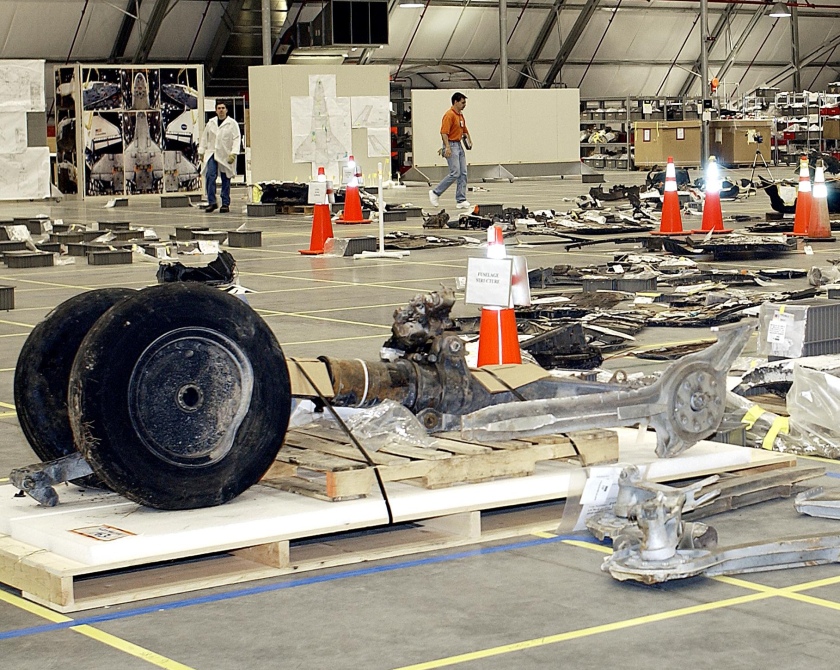
One of the most remarkable pieces of wreckage to make it to the ground after Columbia‘s destruction was her nose landing gear (NLG). The NLG was instantly recognizable to anyone who had worked with the space shuttles, and it was a sobering and saddening reminder of the once-proud ship and her crew. The NLG would have been the last part of Columbia to touch down on the runway had she made it home on February 1, 2003.

Someone found Columbia‘s NLG just inland from a cove on Six Mile Bay on the Toledo Bend Reservoir on February 18, 2003. The NLG arrived at NASA’s collection center at Hemphill, Texas in the bed of a pickup truck that afternoon. Pat Adkins, a quality inspector from Kennedy Space Center, serving on NASA’s Mishap Investigation Team, hosed down and scrubbed the mud off the once-pristine piece of the shuttle. The tires were deflated, the bead was burned off, and the steering actuator arm was missing. Adkins could see where one side of the strut had been exposed to the effects of plasma and hypersonic re-entry.
As with many of the other pieces of Columbia‘s debris, the sight of the landing gear was enough to cause some NASA workers to break down into tears. It was a “whack on the side of the head with a two-by-four” that caused people to confront the reality of the shuttle’s violent destruction.
Everyone from Kennedy Space Center who worked on Columbia‘s recovery and reconstruction had a similar encounter and reaction at some point in the process. No matter how “professional” you try to be, at some point your deepest emotions will come to the surface. It is an unavoidable part of our human reaction to such tragic events. One of the most remarkable parts of the story is that people were able to support each other through their individual and collective grief and then get on with the work of figuring out what caused the accident.

The nose landing gear on the floor of the reconstruction hangar, March 7, 2003. (NASA photo KSC-03pd-0612)
The NLG arrived at the reconstruction hangar at Kennedy Space Center in early March, and was placed on the floor grid near the front of the vehicle.
The NLG is now in the Columbia Preservation Room in KSC’s Vehicle Assembly Building, one of the first items that visitors see upon entering the secure facility. There is a pan underneath the strut to catch hydraulic fluid that occasionally seeps from the piece. It’s hard not to think of the landing gear as a holy relic that still bleeds.
As with all of the other pieces of Columbia‘s debris on display, it serves as a stern reminder that spaceflight is extraordinarily difficult and very risky—every decision has consequences.


“It’s hard not to think of the landing gear as a holy relic that still bleeds.” Lovely visual, Jonathan.
LikeLiked by 1 person
Was up there a couple of weeks ago. Sobering and sad indeed!
LikeLiked by 1 person
So much about that room is difficult to put into words. Here you are looking at pieces of a fallen space shuttle—many of them so terribly twisted, scorched, tortured; others nearly pristine. Lining both sides of the room all the way back are huge boxes filled with bagged parts of everything else that was found. I tried to wrap my mind around this all being part of a single spaceship, and then violently scattered across 25,000 square miles of Texas and Louisiana, and then picked up piece by piece and returned to this room. It’s just impossible to wrap your head around it.
LikeLiked by 1 person